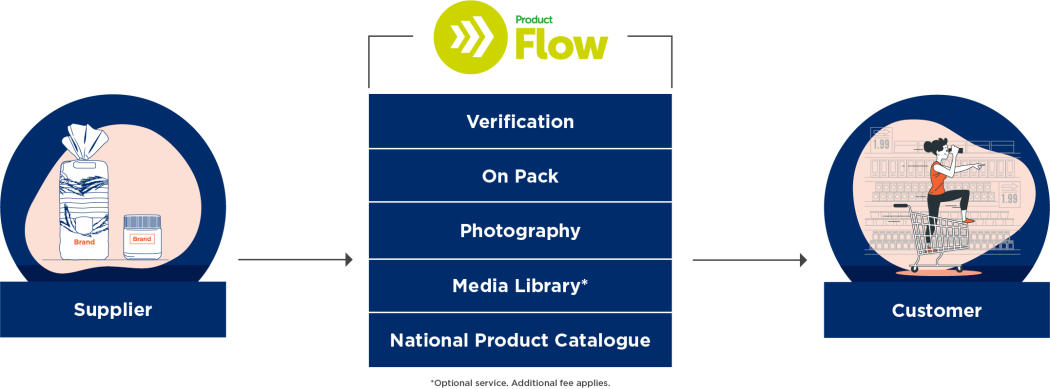Data quality more critical than ever
Product data quality really matters, as Foodstuffs (NZ) has demonstrated again recently in preparing for major modernisation of its core operating systems.
Foodstuffs teams in the North and South Islands spent weeks methodically verifying the packaging dimensions and gross weights of thousands of retail products and shipping units currently received into distribution centres.
Foodstuffs Master Data Operations Manager Patrick O’Leary says data quality has become more critical than ever in the group’s new operating environment.
“Discrepancies discovered between our internally validated data and that provided by suppliers have underscored the significant impact poor data can have on transport operations, inventory management and financial accuracy,” Patrick says. “These inconsistencies can disrupt operations and lead to downstream issues, affecting overall supply chain efficiency.”
The Foodstuffs product verification project found multiple errors in data previously uploaded by suppliers – but it also served to highlight the value of GS1 New Zealand’s ProductFlow service for preventing such errors entering retailers’ systems at all.
GS1 NZ supported the Foodstuffs initiative by looking into every instance of data error. And of those products found to have wrong dimensions or other errors, almost all had not been through the ProductFlow service in the previous two years.
ProductFlow has been very effective at supporting a flow of good quality data from product suppliers to Foodstuffs (and to other retailers), and avoiding the types of errors unearthed in the verification project.
At Foodstuffs, Patrick says the integrity of verified data now has an especially high priority. “We are working closely with suppliers to address and resolve discrepancies. By actively verifying and updating data, setting clear expectations, and offering support, we aim to ensure accurate, reliable data, and ultimately this will improve the quality and efficiency of our operations,” he says.
Data quality headwinds
GS1 NZ has supported the Food & Grocery sector to build and maintain the accuracy and utility of data, with a particular focus on the functioning of the National Product Catalogue (NPC) as used by all parties every day. But the quest for data quality is endless and there are constant headwinds!
Products are modified over time, regulatory requirements change, suppliers are distracted by other demands, key personnel move on, and more. Maintaining accurate, up-to-date data will always be an issue in supply chains and in the web presence of any supermarket.
ProductFlow is a big part of the solution, right at the start of the supply chain. Suppliers using NPC can call on GS1 NZ for fast updating of their product data and data conformance testing, leading to quality verification (or not). Each product run through ProductFlow is meticulously checked – the physical vs the digital - and any issues reported back to the supplier.
GS1 NZ automatically sends a conformance report to the supplier. In coming months, GS1 NZ will explore integrating that part of the process into Foodstuffs systems. GS1 NZ’s software will embed outcomes from conformance testing into routine messages to retailers. GS1 NZ will also look at how a date stamp – important because all data does age – can be attached to each view of a product as it flows towards the retailer’s shelf. Older data has higher risk of obsolescence and error.
Data verification essential
At Foodstuffs, Patrick stresses the importance to retailer decision making and overall efficiency of having product data that is always verified and received from reliable sources.
“Routine data verification involves regular and systematic checks to ensure its accuracy, consistency, and reliability throughout the supply chain or operational process,” Patrick says.
For Foodstuffs, all steps for ensuring data quality start with consistent data collection processes that use standard formats and measurement units. This needs to be followed by regular cross-checking of data between suppliers and external parties. Subsequent steps will ideally include routine feedback loops between retailers and suppliers for the two-way reporting of discrepancies and requesting of updated, accurate data. Ultimately all parties will share a commitment to continuous improvement in their data processes and in overall “data governance”.


